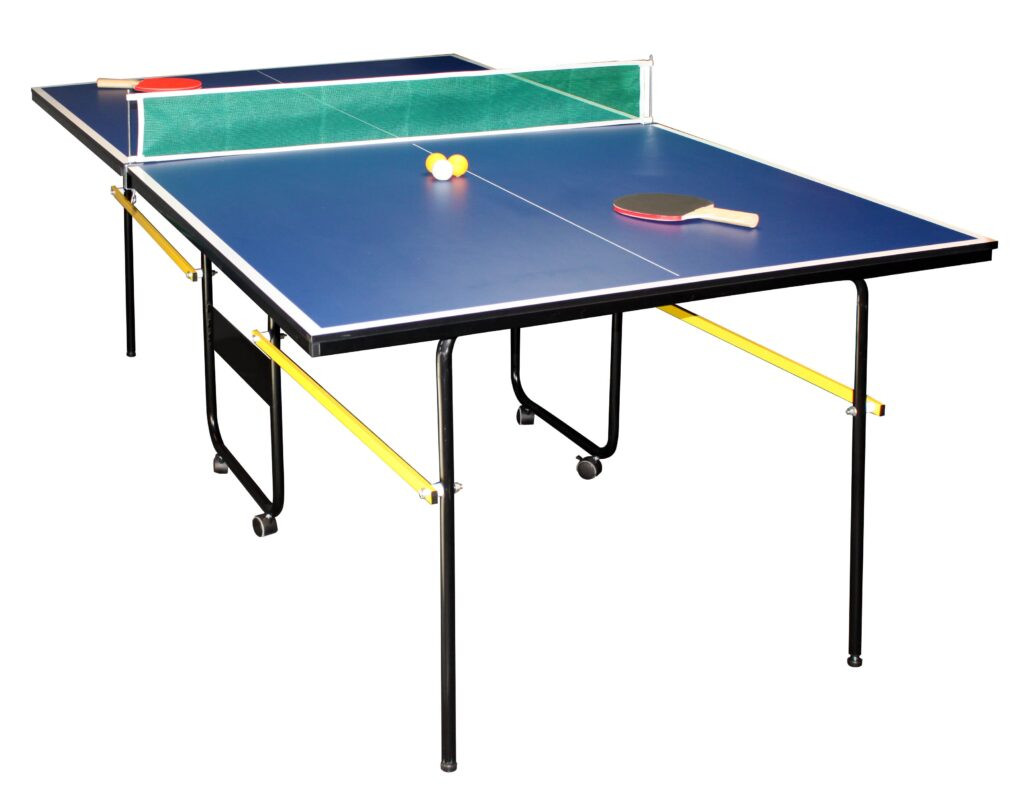How Big a Space Does a Ping Pong Table Need?
Planning to set up a ping pong table? Whether you’re aiming for casual fun or professional training, creating the right environment is key. This guide breaks down everything you need to know about space requirements for a ping pong table to ensure the best gameplay experience.
Understanding Ping Pong Tables
Ping pong, or table tennis, is an engaging and fast-paced game enjoyed by millions worldwide. The design, size, and placement of the table significantly affect how well you can play. Whether you’re setting up for recreation or competition, a solid understanding of table dimensions and space planning is essential.
Standard Ping Pong Table Dimensions
A regulation ping pong table adheres to standards set by the International Table Tennis Federation (ITTF):
| Type | Length | Width | Height | Net height |
|---|
| Mini | 90 cm | 45 cm | 76 cm | 15.25 cm |
| Midi | 150 cm | 75 cm | 76 cm | 15.25 cm |
| Competition Format | 274 cm | 152.5 cm | 76 cm | 15.25 cm |
These precise dimensions ensure consistency for players across all settings, from casual matches to professional tournaments.
Space Requirements for a Ping Pong Table
The table is only part of the equation; adequate surrounding space is vital for optimal gameplay. Here’s what to consider:
Room Size for Recreational Play
For casual games, a room size of 19 feet by 11 feet (5.8m x 3.4m) provides enough space for players to move without restriction.
Room Size for Competitive Play
Competitive table tennis requires more room for fast-paced movements. Aim for a space of 28 feet by 13 feet (8.5m x 4m) to accommodate dynamic gameplay and powerful shots.
Overhead Clearance
Ceiling height matters, especially for high lobs and smashes. A minimum of 8 feet (2.4 meters) is recommended to avoid interruptions.
Measuring Your Room Space
Before purchasing a ping pong table, measure your available space carefully.
Length, Width, and Height
Use a tape measure to assess the dimensions of your room. Be precise and consider adding extra clearance for a more comfortable playing experience.
Buffer Zones
Add a buffer of at least 3 feet (1 meter) on all sides to ensure easy movement for players and room for any bystanders or spectators.
Obstacle Considerations
Account for any doors, windows, or furniture that might interfere with gameplay. Clear the area to maximize usability.
Alternative Solutions for Small Spaces
If your space is limited, don’t worry. There are creative ways to enjoy ping pong without sacrificing fun:
Mini Ping Pong Tables
Mini tables, about two-thirds the size of standard tables, are perfect for smaller rooms and still provide plenty of excitement.
Foldable and Portable Tables
Foldable tables are ideal for multi-purpose rooms. They can be stored away when not in use, freeing up space for other activities.
Multi-functional Rooms
Convert a garage, basement, or shared space into a table tennis area. Use foldable furniture or wall-mounted shelves to optimize the room’s utility.
Choosing the Right Location
Where you place your ping pong table can make a significant difference in your playing experience.
Indoor vs. Outdoor Setups
Indoor setups are more common, providing controlled lighting and climate conditions. If setting up outdoors, choose a weatherproof table and place it in a shaded or covered area to protect it from the elements.
Flooring and Lighting
- Flooring: Use non-slippery surfaces like rubber or vinyl for safety and comfort.
- Lighting: Bright, even lighting without glare ensures better visibility. Overhead lighting is usually the best option.
Enhancing Your Playing Area
A well-equipped and organized playing area enhances both fun and functionality.
Soundproofing Options
For indoor setups, consider adding soundproofing to minimize noise. This is particularly useful in shared spaces or apartments.
Adding Storage for Equipment
Install shelves, cabinets, or wall hooks nearby to store paddles, balls, and other accessories. Keeping gear organized allows you to focus on the game.
FAQs: Answering Common Questions
What are the dimensions of a standard ping pong table?
A standard table is 9 feet long, 5 feet wide, and 2.5 feet high.How much room do I need for a ping pong table?
For recreational play, 19 by 11 feet works well. For competitive play, 28 by 13 feet is ideal.Can I set up a ping pong table outdoors?
Yes, but ensure the table is weatherproof and located in a shaded or covered area.What’s the best solution for small spaces?
Consider mini tables or foldable options to make the most of limited space.What’s the recommended flooring for a ping pong room?
Non-slippery, shock-absorbent flooring like rubber or vinyl is best for safety and comfort.
Conclusion
Setting up a ping pong table is more than just finding a flat surface—it’s about creating an enjoyable and functional environment. By considering the table’s dimensions, room requirements, and additional factors like lighting and storage, you can craft the perfect space for casual games or intense matches.
Even small spaces can become ping pong havens with creative solutions like foldable or mini tables. Measure your room, plan carefully, and get ready to serve up some excitement in your personalized table tennis area!
